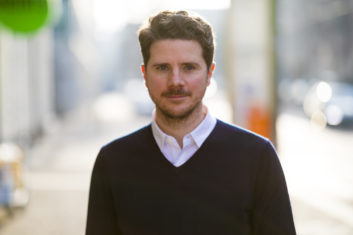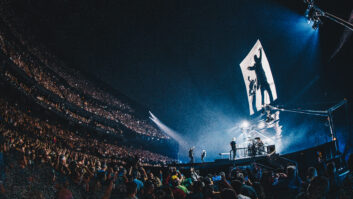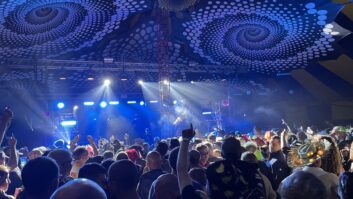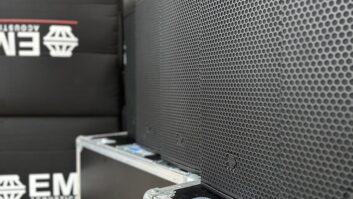It’s an uncomfortable truth that audio professionals are a vulnerable group when it comes to hearing loss. However, unless you’re willing to drastically restrict the amount of audio you listen to, exposure to loud sounds is all but impossible to avoid.
 In basic terms, small hairs in your inner ear vibrate in response to sound waves and convert that sound energy into nerve pulses that travel to your brain to be converted into what you hear. When these hair cells are exposed to extended periods of noise or short bursts of high volume, they can become permanently damaged, resulting in Noise-Induced Hearing Loss (NIHL). This hearing damage adds up over time, often remaining unrecognised, until it is too late as. Put simply, hearing loss can not be reversed, only compensated for. And even then prior hearing ability can not be fully restored.
In basic terms, small hairs in your inner ear vibrate in response to sound waves and convert that sound energy into nerve pulses that travel to your brain to be converted into what you hear. When these hair cells are exposed to extended periods of noise or short bursts of high volume, they can become permanently damaged, resulting in Noise-Induced Hearing Loss (NIHL). This hearing damage adds up over time, often remaining unrecognised, until it is too late as. Put simply, hearing loss can not be reversed, only compensated for. And even then prior hearing ability can not be fully restored.
While you can regulate your exposure to loud music, sports events, and fireworks, there are various circumstances such as people shouting, police sirens, and car horns which are unavoidable, and which still cause damage at high enough or frequent enough levels of exposure. While in the worst cases NIHL can cause deafness, it is also responsible for tinnitus and even moderate damage can impact hearing at mid to high frequencies (around the 3-6kHz range) that can cause difficulties in everyday life, but often isn’t directly recognised as hearing loss.
For audio professionals, this is a huge problem. It’s the audio equivalent of gradually going colorblind without noticing. After all, it’s very difficult to create perfect sound when doing so with imperfect hearing – even Beethoven had to adapt his composing in response to his hearing loss. But unlike NIHL sufferers of the past, the fact we now know better what causes damage to our hearing means we are in a stronger position to prevent it, without the need to walk around wearing earplugs for long periods of time.
In fact given that your brain wants to hear things, wearing earplugs can cause it to ‘turn up’ the amplification of sounds to compensate, meaning that when you take them out, sounds played at regular volume can be painfully loud. There are a variety of measures that can be taken to avoid
this, such as taking breaks from using protection, just as you would take breaks from eight-hour mixing sessions. The key here is awareness. You can also use a sound level meter to make sure you aren’t exposed to 80 decibels or more over an 8 hour period – the level and time frame where hearing loss begins.
Mitigating damage
Obviously, it is not practical for an audio engineer to use a sound level meter constantly but it is easy to avoid loud noises when you know where they are, in addition to wearing ear protection as a means of mitigating the damage to your long-term hearing health. The key term here is ‘long term’, which is why you should be checking your hearing health frequently to spot the signs of hearing loss. Thankfully this doesn’t have to be as inconvenient as a full medical test at an ENT’s office. In fact, tests like the Mimi Hearing Test are one of the easiest ways to explore your hearing ability. Available as an app on iOS and Android, the test gives you understandable results within a few minutes, and can identify what aspects of your hearing have been damaged as part of your own unique hearing profile.
But how can you mitigate any further damage being done to your ears? The answer is both by understanding and investing in what is known as sound personalisation. With 55 percent of the global adult population living with some form of hearing loss, it should come as no surprise that many companies have created products that offer a way to experience audio more fully, taking
hearing ability into account.
It’s fantastic to see a huge brand like Apple investing so much recently into hearing health – in the past year it has released new hearing features, including its iOS14 Hearing Accommodations feature, which enables headphones like the AirPods Pro to customise audio to your hearing ability and actively mitigate damage already done to your ears.
Similarly, updates to the Apple Health Kit mean users can now get insights into their hearing and how to look after it, next to all the other health metrics. In order to get the most benefit from this information, consumers should seek out personalisation options that adapt audio signals to their own hearing ability – turning up the detail of the audio rather than just turning up the volume.
Sound engineers are much like musicians and producers – in that hearing is the most important sense for their role, yet the work itself is often very hard on their hearing. That means that protecting it for as long as possible is paramount. Thankfully with more knowledge of exactly how our hearing works, how we can protect it, and how technology can compensate for damage, audio professionals are now in a better position than ever to keep their hearing at peak performance for longer than before.
[1] The value is based on the values mentioned in the EU Commission Decision 2009/490/EC, which stipulated that sound is safe when below 80 dB(A) for a maximum of 40 hours per week.







